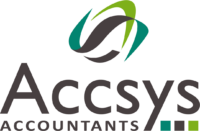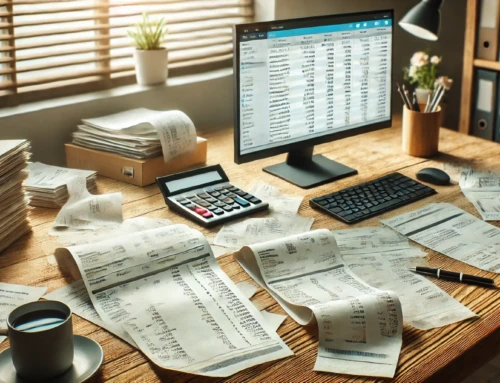
The worst thing about your business not being efficient is the opportunity cost the loss of other things you could be doing with the time.
If your business is inefficient, you are effectively wasting time doing things that could be done quicker, this time could be spent on a myriad of other things to improve the business.
Recently a client approached us with a cash flow problem, and we discovered an inefficient sales invoice process accentuated this. The client needed to raise 100 invoices a month, and it took her 8 hours a month to do this using word templates. The system was so useless they forgot to invoice people and needed to chase some people.
We swapped them over to Xero to drive efficiency and the now automaticity of these invoices, and the total time spent invoicing is now 1 hour a month. The extra time is spent on credit control, and the cash flow problem has dried up.
Your business may be efficient because it hasn’t adapted to the new software and processes that are available now. Things are put in place, but over time, things change as you grow. People generally hate change, and this fear of change can affect how things are done in the business.
Another client had each of their time-based employees produce a paper timesheet that got sent back to the office for typing up into a spreadsheet. The total time for this was 40 hours per month. We introduced a time and attendance solution that consisted of a machine and an RFID chip card that employees swiped when booking on to work and swiped when leaving – the machine then posted to the timesheets to the cloud – reports were printed off and uploaded into the payroll system — time-saving 30 hours a month.
Have you ever heard of the expression of death by a thousand cuts – this is what can happen when your business is inefficient.
There are inefficiencies in any given process in your business, and another word for this is waste.
There is often more than 90% of waste in many standard operating processes.
Sounds hard to believe, doesn’t it? So, consider the following.
Work that is carried out can be classified into two categories: Value Added and Non-Value Added.
Value-Added activities are all those activities that add value to your customer strangely enough. These are the things that your customer wants and expects to pay for or things that change the function or form of your product or service.
Non-Value Add activities are all those things that do not.
Some Non-Value Add activities are essential and may be necessary to do the job, but some are inefficient and can be defined as waste.
That considered, let’s look at how to spot waste.
A chap called Tim Woods, who exist in every business, and you as business owners need to reduce and eliminate his more negative effects.
T – Transport
I – Inventory
M – Movement
W – Waiting and Delays
O – Over Production
O – Over Processing
D – Defects
S – Skills Misuse
Transport
This is about when you move the materials around more than necessary. It could be down to poor layout or planning. When was the last time you reviewed your transport costs?
Inventory
Producing something to sit around and wait for the next process, which doesn’t start immediately, is not adding any value to your business. The more Inventory, the worse it is. Inventory waste can be in the form of work in progress, raw material or finished goods.
In any of these three forms of Inventory, if it hasn’t been sold, it is cash that has been tied up into the material, which the customer hasn’t bought yet– These result in a massive drain on the cash flow!
So, minimise Inventory in all its forms as much as possible.
Movement
Movement differs from transportation because it refers to the movement of workers and equipment. Think of your team moving around, searching to find things – this cannot be adding value.
In addition, think of your worker’s time lumping equipment around, you cannot be using it to add value and make money, plus the chances of damage increases.
Waiting and Delays
When work in progress and goods are not being worked on, they sit there waiting for the next process. Waiting means that the product costs the company money and does not add value.
In addition, think about your worker’s time, waiting for information or a piece of equipment to complete their next task.
Think of this as a bottleneck.
Overproduction
Overproduction is making more than your customer needs or wants and making too many items or parts, which feeds into the other wastes.
Valuable time and energy have gone into producing parts that are sitting around consuming space in stores.
Time is wasted processing this stock, and the customer hasn’t even bought them yet. Those extra parts need to be stock counted and moved around, and all at a cost to the company!
Over-processing
Over-processing is about completing more work for the customer than the customer wants. Such as producing a Rolls Royce when your customer only wants a Volvo or producing a ten-page report when your customer only wants 3 figures.
This can be hard to spot as so often we do things that we think are necessary, failing to ask the customer about their needs.
Defects
Fixing problems costs money and time – Money for the resource to pay staff, lighting, etc. to do it again, but also means that you have to push another planned job back in the queue to get the rework out! It’s all cost and less cash for the business.
Defects are wasteful and cost money.
Skills Misuse
This is where you have someone under-skilled completing a task, which will lead to defects, or someone over skilled completing a task when their time could have been spent better elsewhere.
I know of a Director that had to empty a cesspit recently, not money well spent!
Take a long hard look – Go on a “Waste Walk” to spot waste in your business and see if you can reduce any of the TIM WOODS that you see.






